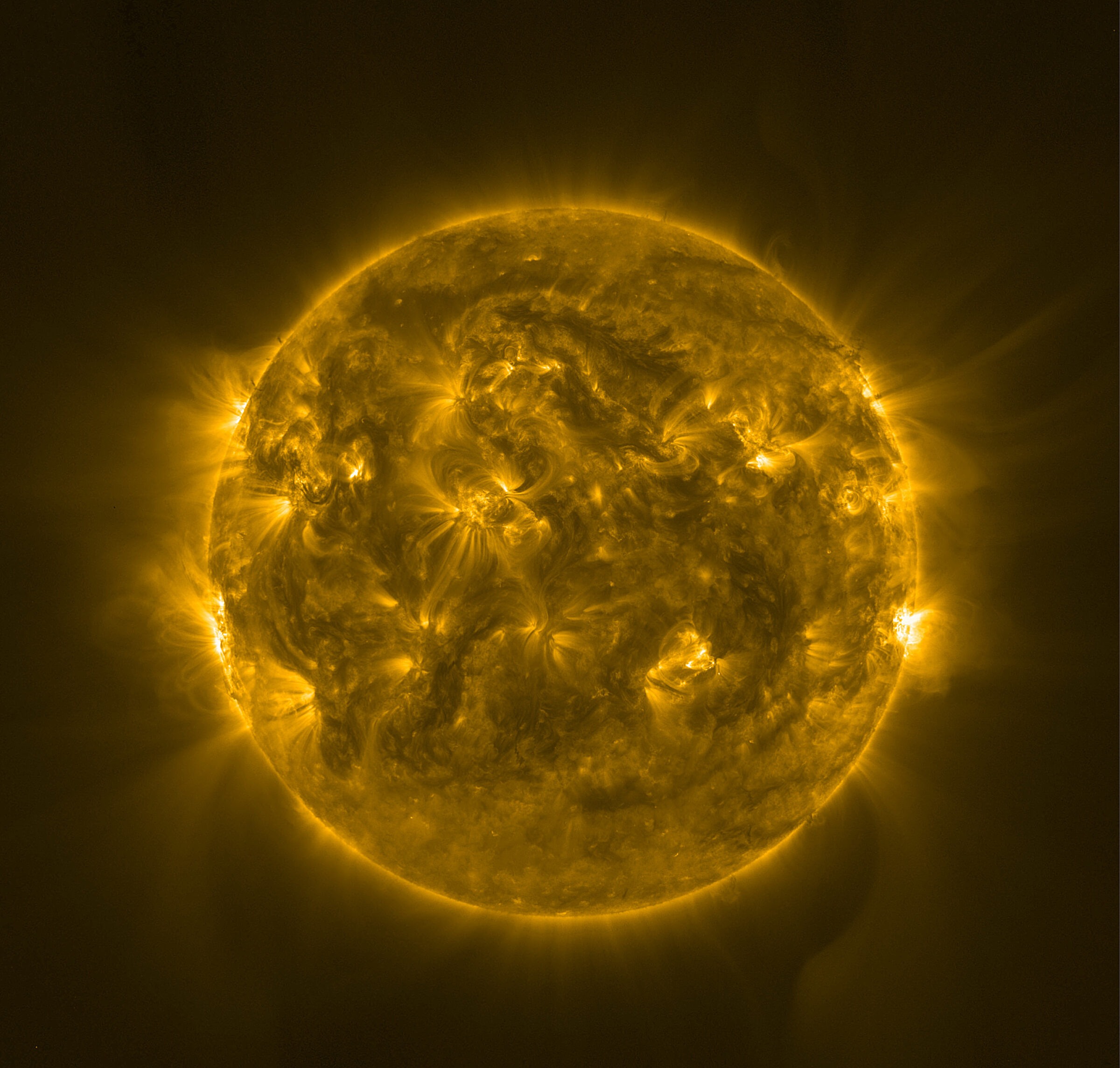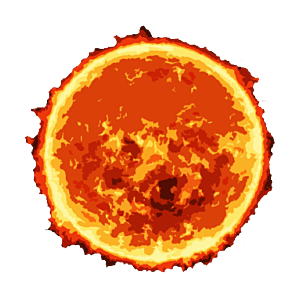The Downlink • Feb 16, 2024
Far from predictable
Space Snapshot

The Sun is a dynamic object. Every 11 years or so, it goes through a cycle of increased and decreased activity. Right now, we’re approaching what’s called the solar maximum, during which the Sun experiences brilliant explosions, dark sunspots, loops of plasma, and swirls of super-hot gas. The European Space Agency’s Solar Orbiter spacecraft saw this kind of activity (pictured) during a recent close approach to the Sun. Compare this to images of a much calmer Sun taken in February 2021. Image credit: ESA & NASA / Solar Orbiter / EUI Team.
Fact Worth Sharing

Solar cycles are hard to predict. The next solar maximum was expected to happen in 2025, but recent observations have bumped that forward to 2024. Scientists had also predicted that this cycle would be weak, but instead the Sun is more active than it’s been in over 20 years.
Mission Briefings


China is looking to test spacecraft to support human exploration of the Moon. The Tiandu-1 and Tiandu-2 satellites are due to launch early this year to test navigation and communications technologies that could someday help astronauts operate on the lunar surface, including on the far side of the Moon where direct communication with Earth isn’t possible. Pictured: The far side of the moon and distant Earth, imaged by China’s Chang’e-5 T1 mission service module. Image credit: Chinese Academy of Sciences.

Greece has signed the Artemis Accords. This makes Greece the 35th country to sign the accords, which are designed to establish a practical set of principles to guide space exploration cooperation among nations.

NASA’s solar sail development is moving forward. The agency cleared a key technology milestone in January with the successful ground test deployment of a 400-square-meter solar sail quadrant that it has been developing. NASA now considers this particular solar sail technology ready for proposals to be flown on science missions.
From The Planetary Society


Would you predict that life could exist on Titan? The moon of Saturn is the only other place in the Solar System with liquid lakes, rivers, and seas on its surface. This sounds like a recipe for life — except Titan’s liquids are ethane and methane, not water. Still, the possibility of life there remains intriguing. Titan is one of our picks for the best places in the Solar System to look for life. Pictured: Radar images from NASA's Cassini spacecraft show lakes on Titan's surface in false color. Image: NASA et al.

India’s space program is increasingly ambitious. The Indian space program has been around since 1963, mostly focusing on the practical and immediate benefits of space to the nation. India now has its sights set higher, with recent missions to Mars and the Moon and new ambitions for human spaceflight. Learn why in our interview with Gurbir Singh, the author of “The Indian Space Programme: India's Incredible Journey from the Third World towards the First.”
What's Up

Yellowish Saturn shines in the evening west, low to the horizon. Jupiter is very bright, higher up in the evening sky. From Feb. 21 to 23 you’ll see Venus and the much dimmer Mars close together in the predawn sky, very low to the eastern horizon. Venus is about 100 times brighter than Mars. Find out what else February’s night skies have in store.
All Things Eclipse


Grab your eclipse swag. T-shirts, posters, mugs, and more! You can start shopping and bidding on all your eclipse-related gear needs, plus some stellar packages, at our newly-launched Eclipse 2024 Auction. Your bid or purchase supports The Planetary Society in our mission to advance space science and exploration. Start your shopping now!

Become an Eclipse Explorer! In anticipation of the total solar eclipse on April 8, 2024, The Planetary Society has partnered with the National Park Service to launch a new Eclipse Explorer Junior Ranger booklet. Young explorers can learn all about eclipses, complete activities, and earn a badge and official certification as a Junior Ranger. Find one at participating National Park Service sites in the path of the 2024 eclipse, or download the Eclipse Explorer booklet and enjoy the activities at home!

Want to watch the total solar eclipse with Bill Nye? You and a friend can be Bill's VIP guests at The Planetary Society's Eclipse-O-Rama 2024 event on April 8, 2024. Enter now at eclipsewithbill.com. Every entry helps us in our mission to advance discoveries in our Solar System and beyond.
Wow of the Week

Nobody would have predicted that a planetary body would be officially named Zoozve, but here we are. The name has a delightful origin, stemming from a children’s poster of the Solar System (pictured) that erroneously showed a moon alongside Venus. Find out what this object actually is, how it ended up on the map, and why the International Astronomical Union has now officially named it Zoozve. Image credit: Alex Foster.
Send us your artwork!
We love to feature space artwork in the Downlink. If you create any kind of space-related art, we invite you to send it to us by replying to any Downlink email or writing to [email protected]. Please let us know in your email if you’re a Planetary Society member!


 Explore Worlds
Explore Worlds Find Life
Find Life Defend Earth
Defend Earth

